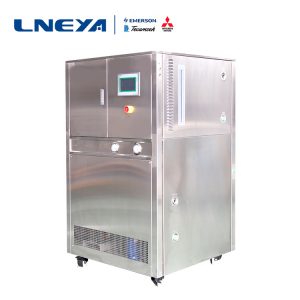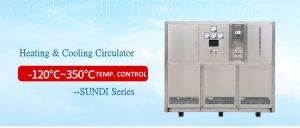How to install and use the reactor temperature control system?
Many users are going to start the installation after purchasing the reactor temperature control system. What should be paid attention to during installation?
When installing the reaction kettle of the reactor temperature control system, it is necessary to pay attention to whether the reactor is damaged during transportation and installation. The magnetic stirrer on the upper part of the kettle lid should be avoided, and the reaction of the reactor temperature control system should be avoided. The kettle operating room requires good ventilation and meets explosion protection requirements. The reaction kettle equipped with the reactor temperature control system was mounted on a support, and balanced on the four supports to keep the equipment perpendicular to the ground. Anti-static grounding devices should be installed on the flammable and explosive equipment of the reaction medium to eliminate static electricity.
If it is a high-temperature, high-speed magnetic stirrer, the reaction kettle equipped with the reactor temperature control system should be filled with lubricating oil at the bearing oil filling port before use. In the future use, the lubricating oil should be added regularly from the oil filling hole. The reactor equipment for the reactor temperature control system is supplied with cooling water in the outer water jacket of the magnetic stirrer before starting. The lower end is the water inlet and the upper end is the water outlet. A separate cooling water system should be used. The cooling water is not allowed. The cooling coil is then passed through the cooling coil in the kettle to enter the cooling water jacket of the magnetic stirrer.
The control cabinet and frequency converter of the reactor temperature control system equipment should be placed in a separate, electrically controlled workshop with dry and well ventilated. When the stirring speed of the reactor temperature control system equipment is greater than 80r/min, the motor cannot be started directly at the working speed, and the stirring speed should be slowly increased by the inverter. Otherwise, the stirrer resistance is too large, causing the magnetic stirrer to overload and causing the agitation to damage or burn the motor. The reaction kettle of the reactor temperature control system needs to be tested for tightness according to the working pressure. It is kept under inert gas for 15~30 minutes to check whether the whole equipment is leaking. If there is no leakage, it can be put into production.
When using the reactor temperature control system, it is necessary to pay attention to the switch is not suitable too much, so as not to damage the overall performance of the reactor temperature control system and the life of the fitting.
Related recommendations
-
Energy-efficient high and low temperature circulation box description
1192With the efficient development of the pharmaceutical and chemical industry, environmental pollution is also the subject of more attention. To this end, LNEYA actively responds to environmental protection, produces energy-efficient and high-tempera...
View details -
what are the causes of the blockage of the cooler
1006The cooler is a very important part of the screw air compressor. The main function is to cool the lubricating oil of air compressor and the compressed air. If it's blocked, then the temperature will go up. A main cause of the air compressor failur...
View details -
Working principle of refrigeration and heating thermostat for chemical industry
1061In the selection process of the special refrigeration and heating thermostat for chemical industry, the heating power and the pressure and flow rate of the heat transfer medium are also factors to be considered. Different raw materials have differ...
View details -
The use and characteristics of the SUNDI series of high and low temperature cooling circulators
1309The SUNDI series of high and low temperature cooling circulators are equipment for direct or auxiliary heating in the fields of biology, physics, chemical engineering, medical treatment, environmental protection, etc. Moreover, the temperature con...
View details
 LNEYA Industrial Chillers Manufacturer Supplier
LNEYA Industrial Chillers Manufacturer Supplier













